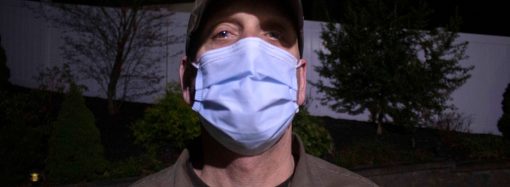By Dalvin Aboagye
After taking JRN 393 with Professor Terry Sheridan last spring, I made a promise to myself to explore radio and audio journalism in a deeper capacity than I had before. Something about radio has an appeal that shares similarities with both video broadcast journalism and print journalism. I usually explain to people that it’s the best of both worlds: What other medium gives the audience an immersive storytelling experience while remaining incredibly accessible? As J.D. Allen, a WSHU producer and one of my mentors at the station, said, “Nothing beats recreating a conversation you’ve just had with someone.” While writing will remain an invaluable instrument in my toolbox, I could still stand to benefit from expanding my skillset at any time.
Before jumping into WSHU, I had a brief stint over the summer helping out with WJFF Radio Catskill, a community radio station serving my section of upstate New York. While the informal setting of WJFF was fun and all, the conventions and practices followed by WSHU, Long Island’s local NPR station, felt indispensable. The ins and outs of radio writing won’t just help you get a look at the work you’d be doing at different stations across the state or country, they also make you re-evaluate the content of your own work regardless of medium. If you’re a print journalist, radio writing forces you to think twice about keeping that extra sentence or using flowery, academic language as opposed to simple, conversational speech. Meanwhile, if you plan on pursuing a career in broadcast, you have to be aware of the precious seconds used in every audio piece as you would with a video for airtime.
The crossover, as I’ve already mentioned, is practically endless. The Long Island bureau managers treat interns the same way they would any other full-time member of their staff. You identify yourself as a reporter, never as an intern. I’ll admit, it took me a couple of weeks to get used to taking up the title. I think multiple semesters’ worth of referring to myself as a “student journalist” and having sources treat me as such comes with a level of baggage that you have to drop to elevate yourself to a professional status.
Given time constraints and the extra workload of a full semester of classes, I believe the work I’ve produced over at WSHU has been strong. I’ve yet to completely master both quality control and storytelling and still have years of growth to look forward to. I’ve been a longtime listener of podcasts and radio shows such as “Radiolab,” KPCC’s “The Frame” and “This American Life.” Every time I plug in and play the latest episodes of said shows, I realize just how much distance I still have to cover in terms of production, delivery and plot development. It was great to work in an environment with people like bureau chief Jay Shah and J.D., who were familiar with some of these shows and could draw parallels between the work we do in the station and the work done in the wide world of public radio.
I’ve discussed with Jay that I feel as if I’m a person who is more engaged in a producing role more than anything else. Acting as the face—or, in this case, the voice—of a project is great, but nothing compares to mixing, mastering and editing the final product and refining a piece from start to finish. Whenever I look at someone else’s writing or package or any other work, I can’t help but take it all in, break it all down, and then get back to the creator and say, “This is really good, but I think it’d be even better if we made some changes like… ” The moderate pace of WSHU newsroom will, I hope, be a stepping stone toward a producing career.
